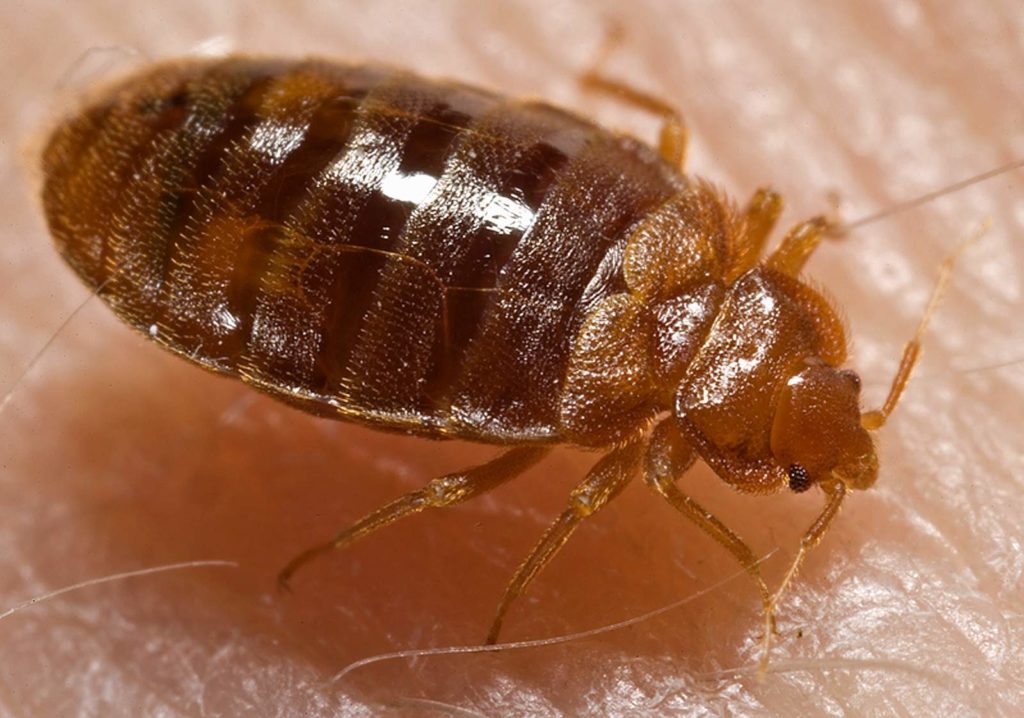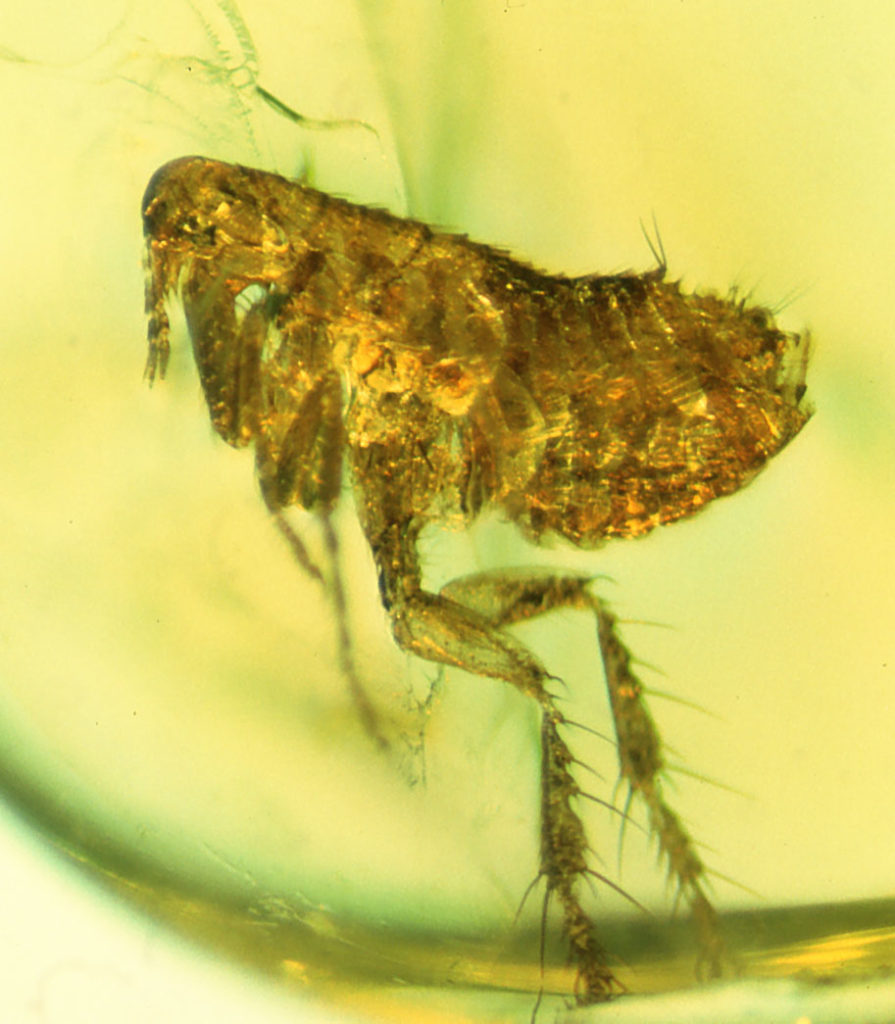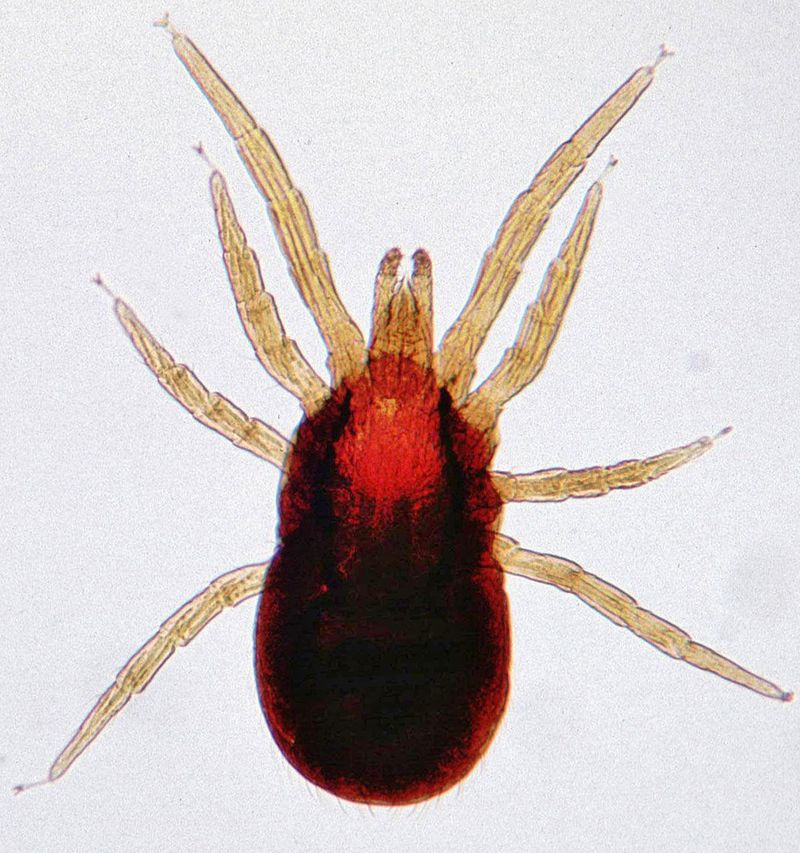
Bed Bag
Bed bugs are parasitic insects of the cimicid family that feed exclusively on blood. Cimex lectularius, the common bed bug, is the best known as it prefers to feed on human blood; other Cimex species specialize in other animals, e.g., bat bugs, such as Cimex pipistrelli (Europe), Cimex pilosellus (Western United States), and Cimex adjunctus (entire Eastern United States).
The name bed bug derives from the preferred habitat of Cimex lectularius: warm houses and especially near or inside beds and bedding or other sleep areas. Bed bugs are mainly active at night, but are not exclusively nocturnal. They usually feed on their hosts without being noticed.
A number of adverse health effects may results from bed bug bites, including skin rashes, psychological effects, and allergic symptoms. Bed bugs are not known to transmit any pathogens as disease vectors. Certain signs and symptoms suggest the presence of bed bugs; finding the adult insects confirms the diagnosis.
Bed bugs have been known as human parasites for thousands of years. At a point in the early 1940s, they were mostly eradicated in the developed world, but have increased in prevalence since 1995, likely due to pesticide resistance, governmental bans on effective pesticides, and international travel. Because infestation of human habitats has begun to increase, bed bug bites and related conditions have been on the rise as well.[Diagnosis of an infestation involves both finding bed bugs and the occurrence of compatible symptoms. Treatment involves the elimination of the insect (including its eggs) and taking measures to treat symptoms until they resolve.
Bed bug bites or cimicosis may lead to a range of skin manifestations from no visible effects to prominent blisters. Effects include skin rashes, psychological effects, and allergic symptoms.
Although bed bugs can be infected with at least 28 human pathogens, no studies have found that the insects are capable of transmitting any of these to humans. They have been found with methicillin-resistant Staphylococcus aureus (MRSA) and with vancomycin-resistant Enterococcus faecium (VRE), but the significance of this is still unknown.
Investigations into potential transmission of HIV, MRSA, hepatitis B, hepatitis C, and hepatitis E have not found any evidence that bed bugs can spread these diseases. However, arboviruses may be transmissible.

Bed Bag
Bed bugs are parasitic insects of the cimicid family that feed exclusively on blood. Cimex lectularius, the common bed bug, is the best known as it prefers to feed on human blood; other Cimex species specialize in other animals, e.g., bat bugs, such as Cimex pipistrelli (Europe), Cimex pilosellus (Western United States), and Cimex adjunctus (entire Eastern United States).
The name bed bug derives from the preferred habitat of Cimex lectularius: warm houses and especially near or inside beds and bedding or other sleep areas. Bed bugs are mainly active at night, but are not exclusively nocturnal. They usually feed on their hosts without being noticed.
A number of adverse health effects may results from bed bug bites, including skin rashes, psychological effects, and allergic symptoms. Bed bugs are not known to transmit any pathogens as disease vectors. Certain signs and symptoms suggest the presence of bed bugs; finding the adult insects confirms the diagnosis.
Bed bugs have been known as human parasites for thousands of years. At a point in the early 1940s, they were mostly eradicated in the developed world, but have increased in prevalence since 1995, likely due to pesticide resistance, governmental bans on effective pesticides, and international travel. Because infestation of human habitats has begun to increase, bed bug bites and related conditions have been on the rise as well.[Diagnosis of an infestation involves both finding bed bugs and the occurrence of compatible symptoms. Treatment involves the elimination of the insect (including its eggs) and taking measures to treat symptoms until they resolve.
Bed bug bites or cimicosis may lead to a range of skin manifestations from no visible effects to prominent blisters. Effects include skin rashes, psychological effects, and allergic symptoms.
Although bed bugs can be infected with at least 28 human pathogens, no studies have found that the insects are capable of transmitting any of these to humans. They have been found with methicillin-resistant Staphylococcus aureus (MRSA) and with vancomycin-resistant Enterococcus faecium (VRE), but the significance of this is still unknown.
Investigations into potential transmission of HIV, MRSA, hepatitis B, hepatitis C, and hepatitis E have not found any evidence that bed bugs can spread these diseases. However, arboviruses may be transmissible.
Fleas
Fleas are small flightless insects that form the order Siphonaptera. As external parasites of mammals and birds, they live by consuming the blood of their hosts. Adults are up to about 3 mm (0.12 in) long and usually brown. Bodies flattened sideways enable them to move through their host's fur or feathers; strong claws prevent them from being dislodged. They lack wings, and have mouthparts adapted for piercing skin and sucking blood and hind legs adapted for jumping. The latter enable them to leap a distance of some 50 times their body length, a feat second only to jumps made by froghoppers. Larvae are worm-like with no limbs; they have chewing mouthparts and feed on organic debris.
Over 2,500 species of fleas have been described worldwide. The Siphonaptera are most closely related to the snow scorpionflies (Boreidae), placing them within the endopterygote insect order Mecoptera.
Fleas arose in the early Cretaceous, most likely as ectoparasites of mammals, before moving on to other groups including birds. Each species of flea is more or less a specialist on its host animal species: many species never breed on any other host, though some are less selective. Some families of fleas are exclusive to a single host group: for example, the Malacopsyllidae are found only on armadillos, the Ischnopsyllidae only on bats, and the Chimaeropsyllidae only on elephant shrews. The oriental rat flea, Xenopsylla cheopis, is a vector of Yersinia pestis, the bacterium which causes bubonic plague. The disease was spread by rodents such as the black rat, which were bitten by fleas that then infected humans. Major outbreaks included the Plague of Justinian and the Black Death, both of which killed a sizeable fraction of the world's population.Fleas are holometabolous insects, going through the four lifecycle stages of egg, larva, pupa, and imago (adult). In most species, neither female nor male fleas are fully mature when they first emerge but must feed on blood before they become capable of reproduction. The first blood meal triggers the maturation of the ovaries in females and the dissolution of the testicular plug in males, and copulation soon follows. Some species breed all year round while others synchronise their activities with their hosts' life cycles or with local environmental factors and climatic conditions. Flea populations consist of roughly 50% eggs, 35% larvae, 10% pupae, and 5% adults.


Fleas
Fleas are small flightless insects that form the order Siphonaptera. As external parasites of mammals and birds, they live by consuming the blood of their hosts. Adults are up to about 3 mm (0.12 in) long and usually brown. Bodies flattened sideways enable them to move through their host's fur or feathers; strong claws prevent them from being dislodged. They lack wings, and have mouthparts adapted for piercing skin and sucking blood and hind legs adapted for jumping. The latter enable them to leap a distance of some 50 times their body length, a feat second only to jumps made by froghoppers. Larvae are worm-like with no limbs; they have chewing mouthparts and feed on organic debris.
Over 2,500 species of fleas have been described worldwide. The Siphonaptera are most closely related to the snow scorpionflies (Boreidae), placing them within the endopterygote insect order Mecoptera.
Fleas arose in the early Cretaceous, most likely as ectoparasites of mammals, before moving on to other groups including birds. Each species of flea is more or less a specialist on its host animal species: many species never breed on any other host, though some are less selective. Some families of fleas are exclusive to a single host group: for example, the Malacopsyllidae are found only on armadillos, the Ischnopsyllidae only on bats, and the Chimaeropsyllidae only on elephant shrews. The oriental rat flea, Xenopsylla cheopis, is a vector of Yersinia pestis, the bacterium which causes bubonic plague. The disease was spread by rodents such as the black rat, which were bitten by fleas that then infected humans. Major outbreaks included the Plague of Justinian and the Black Death, both of which killed a sizeable fraction of the world's population.Fleas are holometabolous insects, going through the four lifecycle stages of egg, larva, pupa, and imago (adult). In most species, neither female nor male fleas are fully mature when they first emerge but must feed on blood before they become capable of reproduction. The first blood meal triggers the maturation of the ovaries in females and the dissolution of the testicular plug in males, and copulation soon follows. Some species breed all year round while others synchronise their activities with their hosts' life cycles or with local environmental factors and climatic conditions. Flea populations consist of roughly 50% eggs, 35% larvae, 10% pupae, and 5% adults.

Mites
Mites are small arthropods belonging to the class Arachnida and the subclass Acari (also known as Acarina). The term "mite" refers to the members of several groups in Acari but it is not a clade, and excludes the ticks, order Ixodida. Mites and ticks are characterised by the body being divided into two regions, the cephalothorax or prosoma (there is no separate head), and an opisthosoma. The scientific discipline devoted to the study of ticks and mites is called acarology.
Most mites are tiny, less than 1 mm (0.04 in) in length, and have a simple, unsegmented body plan. Their small size makes them easily overlooked; some species live in water, many live in soil as decomposers, others live on plants, sometimes creating galls, while others again are predators or parasites. This last group includes the commercially important Varroa parasite of honey bees, as well as the scabies mite of humans. Most species are harmless to humans but a few are associated with allergies or may transmit diseases.Many mites are parasitic on plants and animals. One family of mites, Pyroglyphidae, or nest mites, live primarily in the nests of birds and animals. These mites are largely parasitic and consume blood, skin and keratin. Dust mites, which feed mostly on dead skin and hair shed from humans instead of consuming them from the organism directly, evolved from these parasitic ancestors.
Parasitic mites sometimes infest insects. Varroa destructor attaches to the body of honey bees, and Acarapis woodi (family Tarsonemidae) lives in their tracheae. Hundreds of species are associated with other bees, mostly poorly described. They attach to bees in a variety of ways. For example, Trigona corvina workers have been found with mites attached to the outer face of their hind tibiae. Some are thought to be parasites, while others are beneficial symbionts. Mites also parasitize some ant species, such as Eciton burchellii.
Plant pests include the so-called spider mites (family Tetranychidae), thread-footed mites (family Tarsonemidae), and the gall mites (family Eriophyidae). Among the species that attack animals are members of the sarcoptic mange mites (family Sarcoptidae), which burrow under the skin. Demodex mites (family Demodicidae) are parasites that live in or near the hair follicles of mammals, including humans.

Mites
Mites are small arthropods belonging to the class Arachnida and the subclass Acari (also known as Acarina). The term "mite" refers to the members of several groups in Acari but it is not a clade, and excludes the ticks, order Ixodida. Mites and ticks are characterised by the body being divided into two regions, the cephalothorax or prosoma (there is no separate head), and an opisthosoma. The scientific discipline devoted to the study of ticks and mites is called acarology.
Most mites are tiny, less than 1 mm (0.04 in) in length, and have a simple, unsegmented body plan. Their small size makes them easily overlooked; some species live in water, many live in soil as decomposers, others live on plants, sometimes creating galls, while others again are predators or parasites. This last group includes the commercially important Varroa parasite of honey bees, as well as the scabies mite of humans. Most species are harmless to humans but a few are associated with allergies or may transmit diseases.Many mites are parasitic on plants and animals. One family of mites, Pyroglyphidae, or nest mites, live primarily in the nests of birds and animals. These mites are largely parasitic and consume blood, skin and keratin. Dust mites, which feed mostly on dead skin and hair shed from humans instead of consuming them from the organism directly, evolved from these parasitic ancestors.
Parasitic mites sometimes infest insects. Varroa destructor attaches to the body of honey bees, and Acarapis woodi (family Tarsonemidae) lives in their tracheae. Hundreds of species are associated with other bees, mostly poorly described. They attach to bees in a variety of ways. For example, Trigona corvina workers have been found with mites attached to the outer face of their hind tibiae. Some are thought to be parasites, while others are beneficial symbionts. Mites also parasitize some ant species, such as Eciton burchellii.
Plant pests include the so-called spider mites (family Tetranychidae), thread-footed mites (family Tarsonemidae), and the gall mites (family Eriophyidae). Among the species that attack animals are members of the sarcoptic mange mites (family Sarcoptidae), which burrow under the skin. Demodex mites (family Demodicidae) are parasites that live in or near the hair follicles of mammals, including humans.